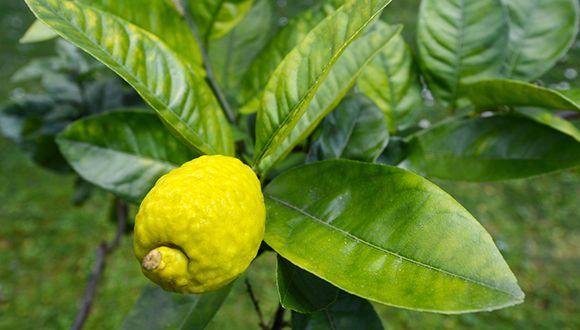The Four Species of Sukkot Explained
TAU archaeologist on the origins of the Etrog, Lulav and more
The Etrog (citron fruit), Lulav (frond of date palm) Hadass (myrtle bough) and Aravah (willow branch) – are the four species the Jewish people are commanded to bind together and wave in the sukkah, a temporary booth constructed for use during the week-long festival of Sukkot. Every Jewish child knows them, and likes to declare which of the four is noted for its excellent flavor and fragrance, which has either no fragrance or no flavor, and which has neither.
The four species are certainly the most distinguished items in the sukkah. The Torah commands us in the Book of Leviticus, chapter 23 verse 40: "And ye shall take you on the first day the fruit of goodly trees, branches of palm trees, boughs of thick trees and willows of the brook and ye shall rejoice before the Lord your God for seven days."
According to Dr. Dafna Langgut, 2024 Kadar Family Award recipient, of TAU's The Sonia and Marco Nadler Institute of Archaeology and The Steinhardt Museum of Natural History, "this mitzvah includes a reference to two known species of plants –branches of palm trees and willows of the brook, but scholars were undecided as to whether the terms “fruit of goodly hadar trees” and “boughs of thick trees” (etz avot) refer to specific plants or simply give general instructions."
Enter the Etrog
"Commentaries from the 1st century CE began to identify the species noted in Leviticus as specific plants: date palm, willow, citron and myrtle," explains Dr. Langgut. "At this time, the Etrog (citron) became established in the Sukkot tradition, in both relevant texts and visual representations. Together with the willow it appeared on coins from the Great Revolt (the first Jewish–Roman War -66–73 CE) as well as on coins from the Bar Kokhba Revolt (132-136 CE(. It must be noted, however, that while the myrtle, date and willow are native to our region, the Etrog is not."
Journey of the Etrog to the Holy Land
According to Dr. Langgut "the Etrog originates from east India and the south of China. In fact, it is one of the three early ancestors of the citrus trees we know today - the other two being the pomelo and the mandarin. All other citrus fruits were created through crossbreeding of these three species. The name Etrog hints at its origins: in Hindi it is called Turange, and in Persian Turunge, and later Etrunge.
An interesting discovery made several years ago at an archaeological excavation at kibbutz Ramat Rachel near Jerusalem, sheds light on the Etrog's arrival and early cultivation in Judea. TAU archaeologists Prof. Oded Lipschits and Dr. Yuval Gadot unearthed a royal garden located at the front of a large, magnificent palace. Studying one of the water pools in this garden, dated around the 5th-4th centuries BCE Dr. Dafna Langgut was able to identify fossilized citron pollen preserved in the pool's plaster coating.
The fossilized pollen enabled the researchers to precisely determine the botanical makeup of the ancient garden. The pollen belonged to vegetation typical of Mediterranean woodlands, as well as domesticated fruit trees and ornamental plants, including the willow and the myrtle. Some of the trees identified, such as the walnut and the Cedar of Lebanon do not grow in our region, and had apparently been imported from afar. One of these was the Etrog – certainly the most surprising find in the royal garden of Ramat Rachel. This is in fact the earliest archaeo-botanical evidence of the cultivation of the Etrog in the Land of Israel specifically, and throughout the Mediterranean Basin in general.
So how did the imported Etrog end up as one of our four species?
"The idea of cultivating the Etrog seems to have trickled slowly into Jewish tradition from the Royal Garden at Ramat Rachel – the seat of the representative of the Persian Empire to which our area belonged about 2,500 years ago," explains Dr. Langgut. "At first it was considered an exotic plant, to be found only in splendid gardens. About 200 years later than the Ramat Rachel garden, it began to appear in the gardens of nobles in Rome and Pompeii. And at some point, probably around the 1st century CE, it was established in Jewish tradition as one of the four species we are commanded to wave in the Sukkah – together with the willow, the myrtle and the palm."






